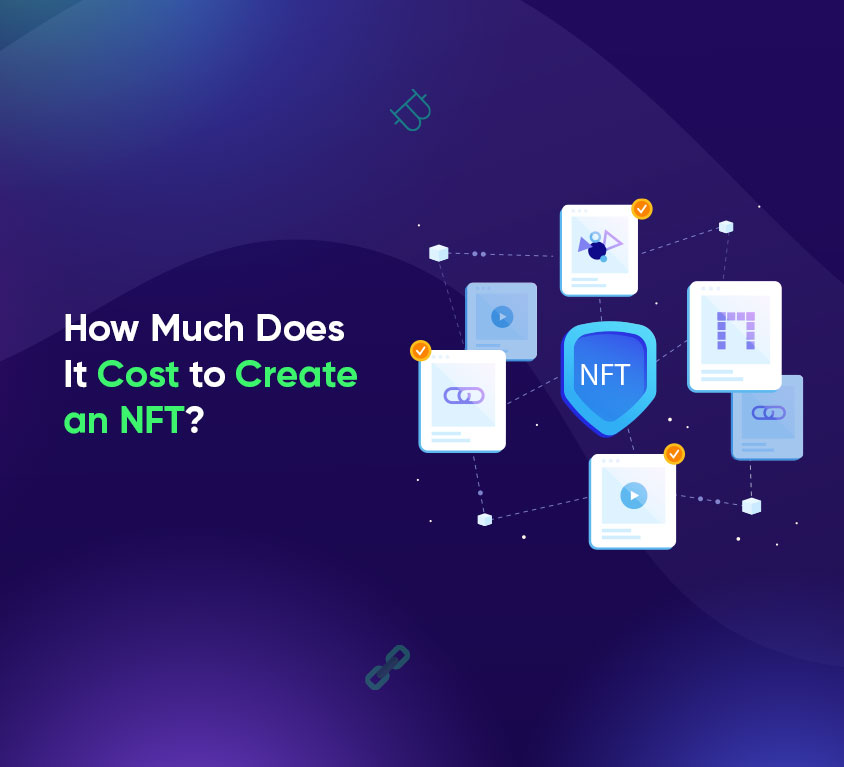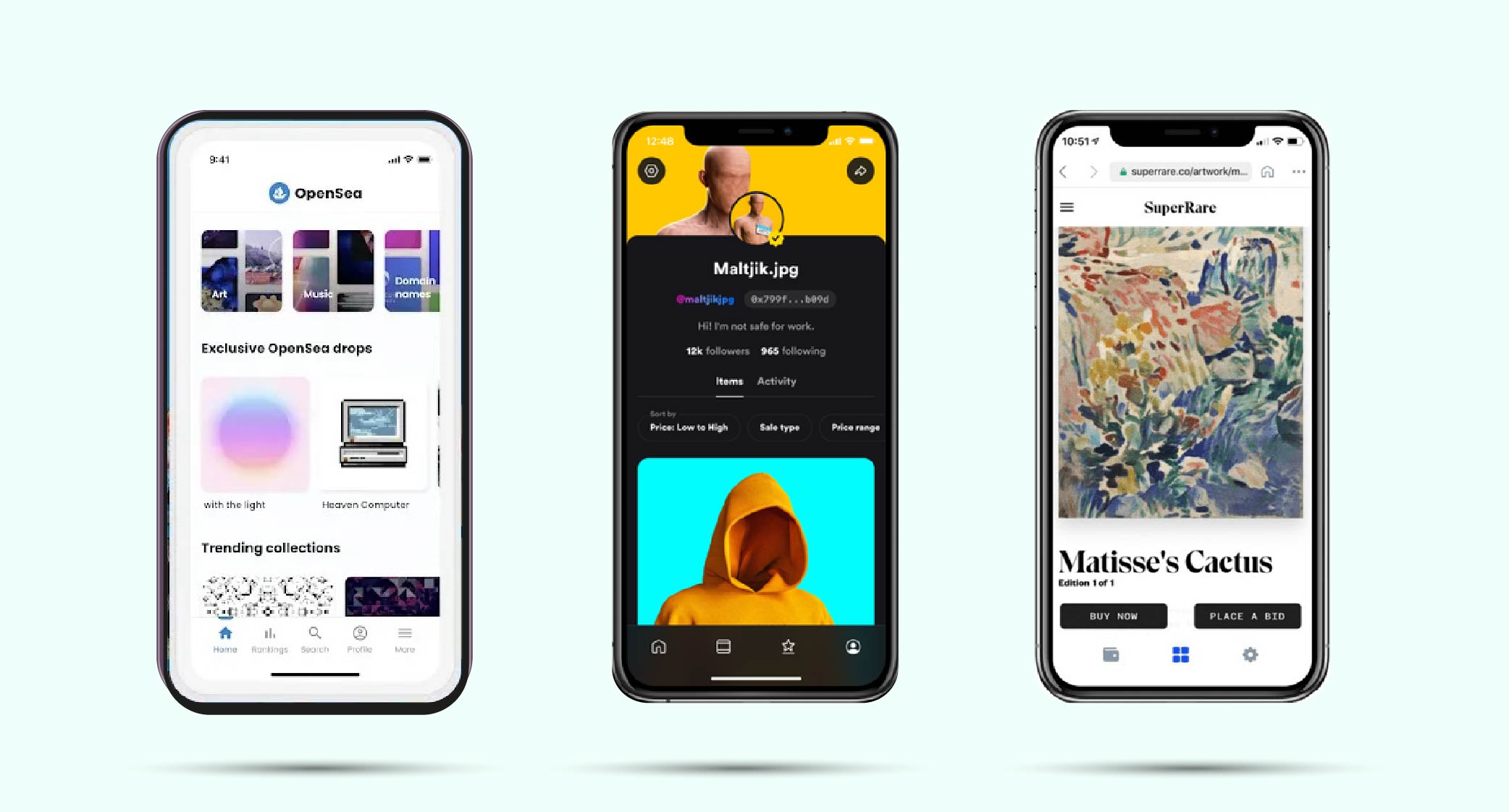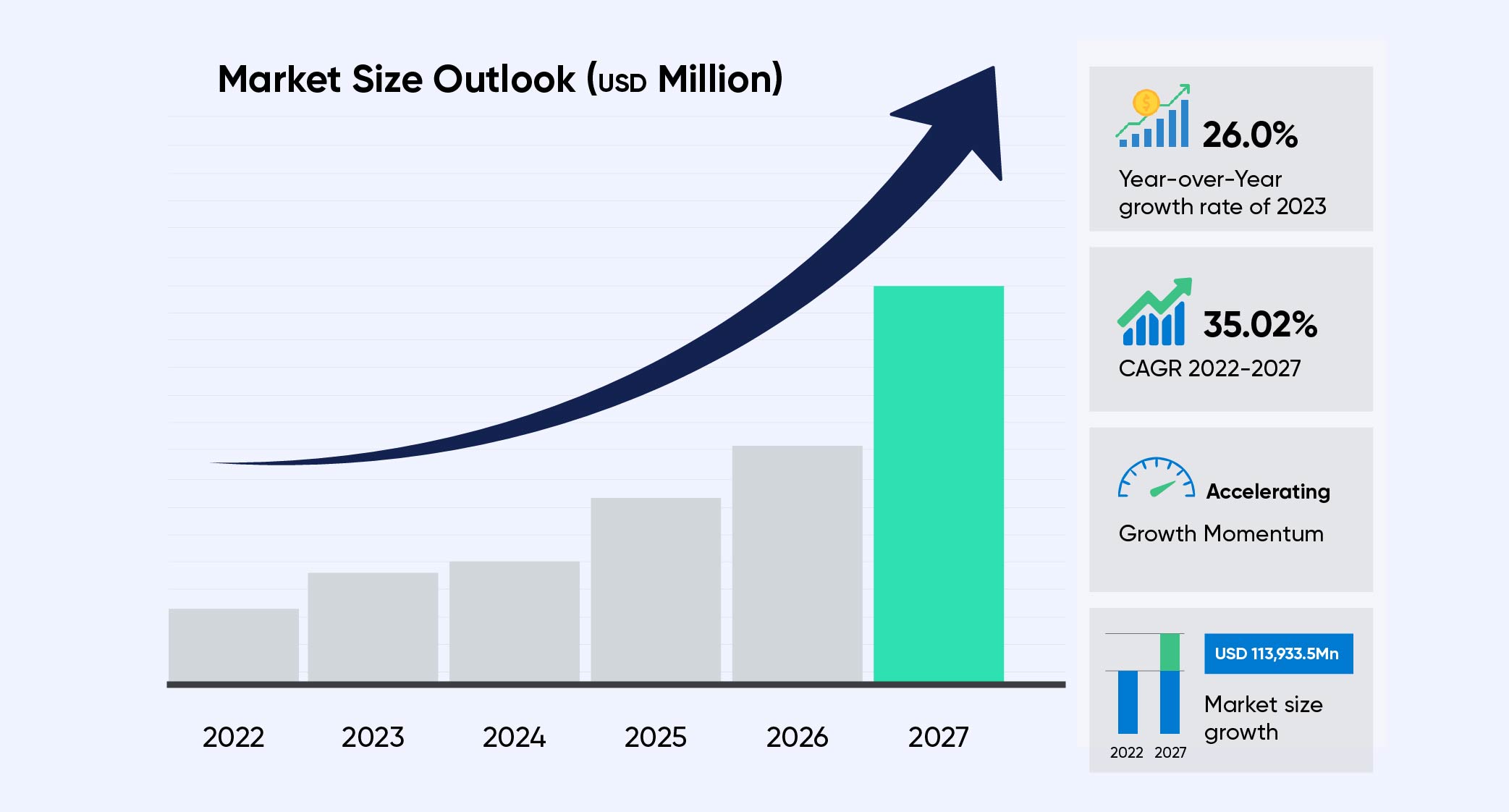
Introduction
Blockchain & Web3 Services Trusted By Leaders
- Develop innovative solutions using our state-of-the-art blockchain expertise.
- Achieve accelerated growth with robust & scalable Web3 consulting.
- Unlock 360-degree security with our top-rated blockchain development.
How Much Does It Cost to Create an NFT?
The world of digital art and collectibles has been revolutionized by Non-Fungible Tokens (NFTs). These unique digital assets have gained immense popularity in recent years, with artists, musicians, and creators of all kinds rushing to tokenize their work. However, before diving into the NFT market, it’s essential to understand the costs associated with creating and minting these digital collectibles. In this article, we will break down the expenses involved in creating an NFT. When NFTs hit the news, it was thought to be a boom for the creator economy. However, firms immediately decided on their particular strategy for implementing NFTs for growth. One of the simpler ways to expand your enterprises online is through NFTs.What is NFT?
NFT Marketplace Trends
The NFT Marketplace industry is expanding; in 2021, the trading volume of NFTs exceeded $13 billion, according to The Block Research. When compared to $33 million in 2020, the volume has increased by roughly 400 times. There is room for new platforms to host and promote their collections because the data indicates that many people want to create and launch NFT projects. Artists and aficionados are searching for accommodating circumstances, convenience, and the chance to advance and compete on an NFT platform. People will choose your market as the location for the mint if it is the most consistent with their expectations, and you as the owner will profit from the launch, sales, and advertising. Based on this, we can conclude that developing an NFT market now is a good idea.Top 3 Marketplaces
1. Opensea
One of the biggest and most well-known NFT marketplaces is OpenSea. It supports a variety of digital assets, such as artwork, memorabilia, virtual properties, and more. It offers a lively community and an intuitive user interface.2. Rarible
Users can develop and trade their NFTs on this decentralized NFT marketplace. It rewards users and promotes a creative ecosystem with its own governance token, RARI.3. SuperRare
SuperRare is a high-end NFT marketplace that specializes in digital art. It serves the needs of both artists and collectors by enabling the tokenization of artistic creations and the purchase of one-of-a-kind, limited-edition items by collectors.
How Much Does It Cost to Create an NFT?
The high cost of NFTs can be attributed to various factors, and understanding “why are NFTs so expensive” requires considering factors like rarity, creator reputation, and the emotional value they hold for collectors. The first step in creating an NFT is the actual creation of the digital asset. This can encompass a wide range of content, from digital art and music to virtual real estate and even tweets. The costs associated with creating the asset itself can vary significantly depending on factors such as complexity and the tools you use.How Much Does It Cost to Mint an NFT?
The typical cost of producing NFT is between $0.05 and $150. NFT creation costs vary depending on a number of variables, including blockchain costs, gas fees, marketplace account fees, listing fees, etc. The most expensive and least expensive blockchains are Solana and Ethereum, respectively. The blockchain fee covers a large portion of the cost of NFT mining. When it’s busiest, the Ethereum blockchain occasionally charges fees of up to $500 to construct a single NFT. Investors are increasingly exploring the concept of fractional NFT ownership to share ownership of rare digital collectibles and artworks.1. Minting Fees
Once your digital asset is ready, you’ll need to mint it into an NFT. Minting is the process of creating a unique token on a blockchain platform like Ethereum. Minting fees can vary depending on the blockchain network and the platform you choose.a. Ethereum
Ethereum is the most widely used blockchain for NFTs, but it comes with associated gas fees. These fees can fluctuate based on network congestion, but they are typically in the range of $50 to $200 per NFT. Ethereum-based NFT marketplaces like OpenSea charge gas fees for minting, listing, and transferring NFTs. Moreover, NFT marketplace development involves creating a digital platform where users can buy, sell, and trade NFTs.b. Other Blockchains
There are alternative blockchain networks, such as Binance Smart Chain (BSC), Flow, and Tezos, which offer lower minting fees than Ethereum. However, these platforms may have fewer users and a smaller audience.2. Listing and Marketplace Fees
After minting your NFT, you’ll likely want to list it on an NFT marketplace where buyers can discover and purchase it. Listing fees and marketplace commissions are essential costs to consider.a. Listing Fees
Some NFT marketplaces charge a fee to list your NFT. The amount can vary significantly, with some platforms offering free listings and others charging anywhere from a few dollars to hundreds of dollars per listing.b. Marketplace Commissions
When you sell an NFT, most marketplaces take a commission on the sale. This commission can range from 2% to 10% or more, depending on the platform.Marketing and Promotion
To maximize the visibility of your NFT and attract potential buyers, you may need to invest in marketing and promotion. Costs can include creating a website, social media advertising, hiring influencers, and participating in NFT communities and events. The amount you spend on marketing is highly variable and depends on your goals and budget.